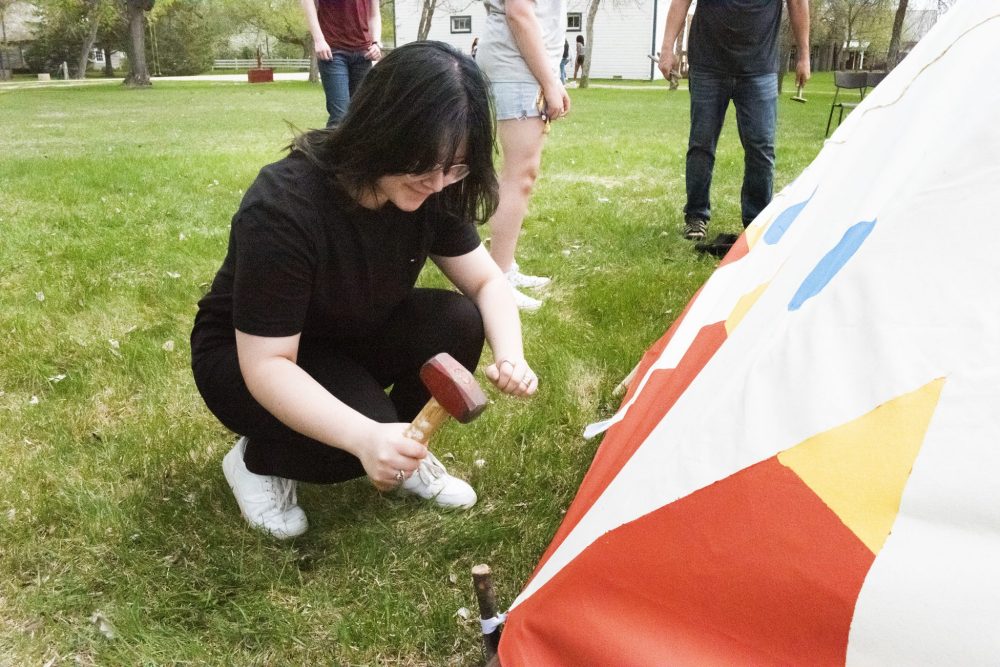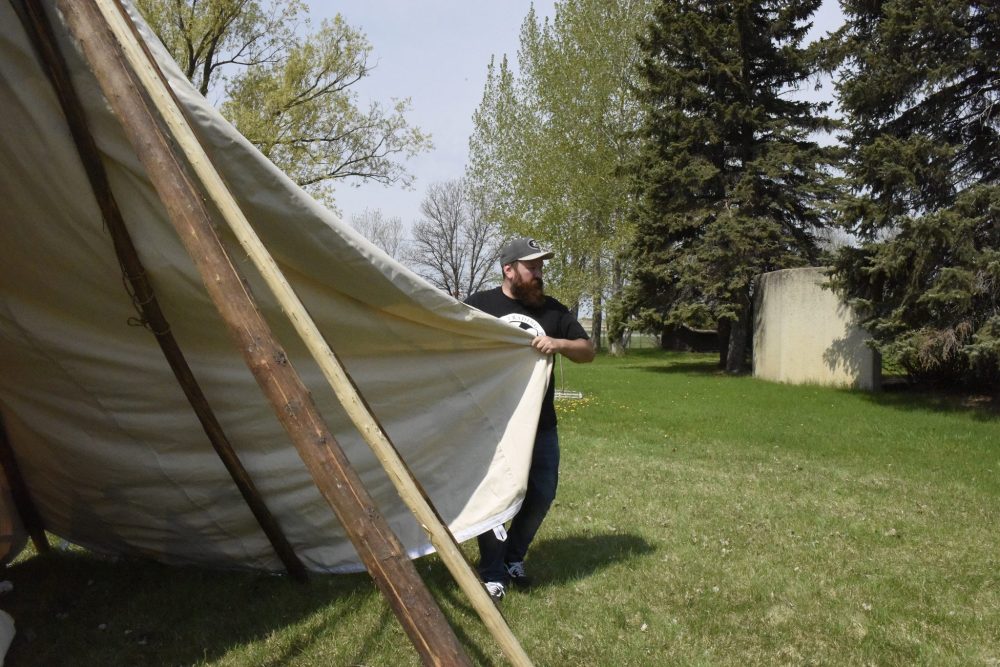Tipi Joe shares culture with students
Advertisement
Hey there, time traveller!
This article was published 29/05/2023 (723 days ago), so information in it may no longer be current.
Students from Steinbach Regional Secondary School were on hand at the Mennonite Heritage Village (MHV) on Friday learning about Indigenous life and culture while building a teepee.
The Grade 11 history and ethics students listened to Joe Lanceley, also known as Tipi Joe, as he spoke about the Anishinaabe way of life.
“I saw a lot of people very interested in what he was talking about. A lot of people were asking a lot of questions about it and the awareness he brought up with the teepee,” said student Henz-Khelee Florendo.

“Honestly, I didn’t know that much about the teepee. There’s just so much more about it that I didn’t know about. The way he explains the parts of the teepee and he incorporates everything about it, I think makes a difference (to how we understand Indigenous people) in the long run.”
In his teachings, Lanceley explained how a teepee door is always facing east. He said this was to prevent the door from getting covered in snow from the northwestern wind. He also said the teepee is the representation of the female body and that as one exits to the east, you emerge from it in the morning as if you’ve “been born again.”
“Every day is like a new beginning; every day is like a new life.”
He also shared that every teepee has 13 poles representing the 13 months of the lunar calendar and the female menstrual cycle. The poles are the ribs of a woman and when you’re inside you’re protected like you would be in the womb. The teepee is also a sanctuary where the people inside are the responsibility of the teepee owner and he must provide food, water, safety, security, and shelter.
Prior to the canvas used now, teepees were made with bison hides. A full-sized teepee would require 16-18 full sized hides, which the women of the tribe would be responsible for stitching together. It would take the women a whole season to a couple of years to build a teepee cover, but with canvas it took them only a matter of days.
“When you live a life where you’re on the move and where weight is always a concern. A full-size teepee made out of bison hide will weigh about 200 pounds, this teepee cover made out of canvas weighs 50 pounds. For the last 300 years, teepees have been made from canvas,” said Lanceley, who’s been erecting teepees for 30 years.
This is the first time an Indigenous structure has been erected at the MHV.

“With Tipi Joe, the expert leading the way and providing us with teachings, there is so much to learn. He talked about how each pole is a member of a family. You have the mother, the father, and the next one is the child – we build community that way. That’s a good symbol for us to know how to be together,” said executive director Gary Dyck.
Lanceley teaches about 4,000 to 5,000 students a year about teepee and prairie indigenous culture.
“The lesson I try to teach to every group regardless of age is to understand that it’s a home and it should be respected as such….And that teepee that gets destroyed or stolen is you’re effectively stealing someone’s home and that happens far too much. The other lesson is the lesson I focus on with students of all ages, is the first lesson that comes at the door of the teepee and that’s to treat the teepee, the people inside of it, and it’s lessons with love and respect. If we can practice love and respect, then that enables us to learn all the other lessons that come along with it.”
